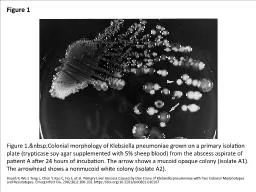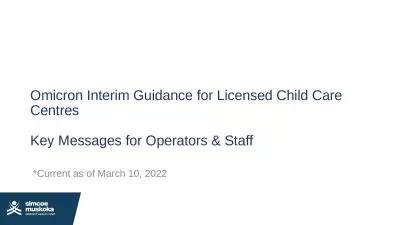PPT-CONCLUSIONS The purpose of the present investigation was to isolate and identify some
Author : liane-varnes | Published Date : 2019-06-22
Saccharomyces spp by classical morphology and biochemical method and molecular PCR technique methods The PCR method allow the highly sensitive detection of specific
Presentation Embed Code
Download Presentation
Download Presentation The PPT/PDF document "CONCLUSIONS The purpose of the present i..." is the property of its rightful owner. Permission is granted to download and print the materials on this website for personal, non-commercial use only, and to display it on your personal computer provided you do not modify the materials and that you retain all copyright notices contained in the materials. By downloading content from our website, you accept the terms of this agreement.
CONCLUSIONS The purpose of the present investigation was to isolate and identify some: Transcript
Download Rules Of Document
"CONCLUSIONS The purpose of the present investigation was to isolate and identify some"The content belongs to its owner. You may download and print it for personal use, without modification, and keep all copyright notices. By downloading, you agree to these terms.
Related Documents














